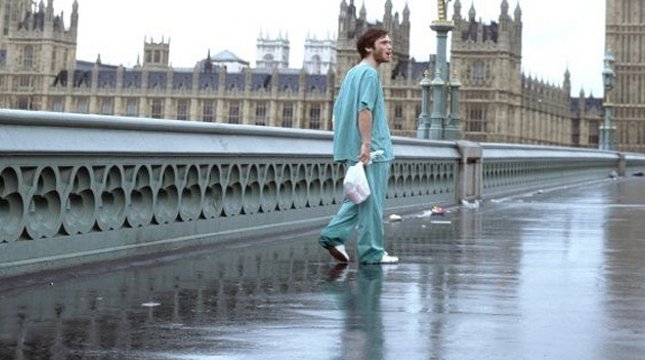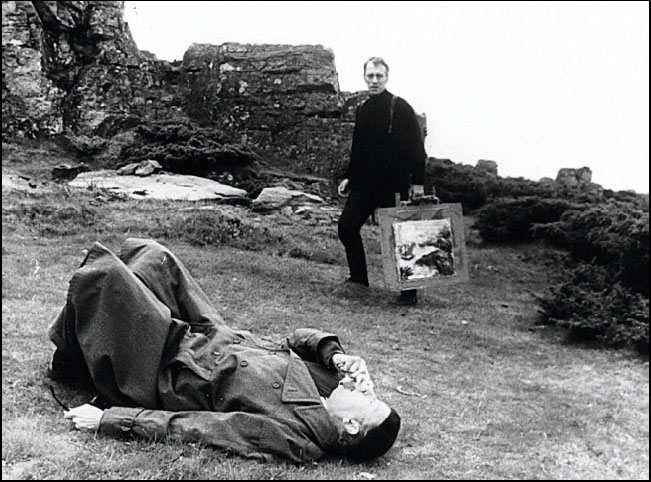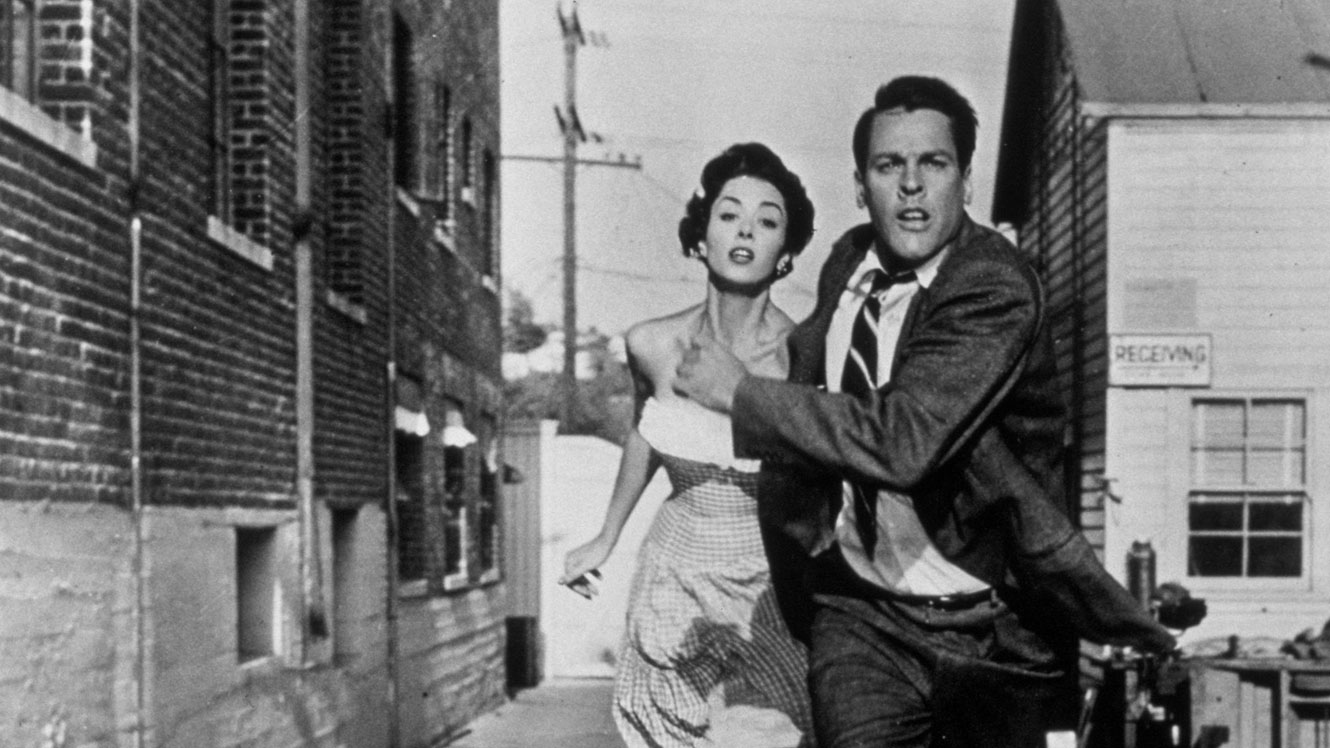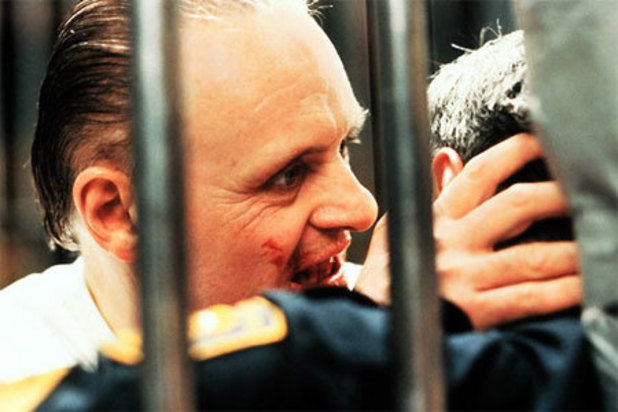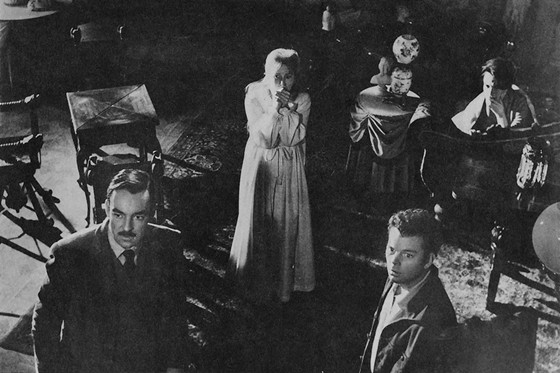14. 28 Days Later (Danny Boyle)
In some ways the poster-child for the modern horror renaissance, Danny Boyle’s film is still in some ways one of the scariest films released in the past 15 years, or ever for that matter. Stylistically, the film has too much going for it to mention, most of all its grainy, de-saturated camera that looks like it was pulled off a camcorder circa 1975 but which undeniably captures the gritty, destroyed world he’s brought to life, or death, here.
We can almost feel the crackles in the screen as we observe the cracks in the ravaged society we observe. He also gives us a new variety of “fast” non-zombies to shake things up, played out now but riveting at the time, and which he doesn’t overuse for his rendering them in shadow through most of the film.
But it’s the film’s human characters, given a slice-of-life drained-ness and who remain, intentionally, at arm’s lengths even as they bond, that are most affecting. They give us destroyed, embittered humans to root for, people who we would want to see survive, except for the fact that we know a quick death might be a better cure for their tired weariness.
The film’s second-half is a different affair entirely, where we’re treated to human villains to rival, or even surpass, Romero’s macho-militants in Day of the Dead, but the drained cinema remains. Above all, it is a proud statement to how Boyle’s style is firmly anti-genre, even as it is thoroughly able to live and breathe within just about any genre. His kinetic colorism and passionate film-making bridge genres, and he seems hell-bent on conquering any he can find.
13. Hour of the Wolf (Ingmar Bergman)
For all everyone says about Hour of the Wolf being “Bergman’s horror film”, it’s also pure Bergman. He doesn’t re-work or change his style here, but merely applies it to a new subject. And even then, the difference is as simple as changing his normal subject of “anxiety about the self” to “fear about the self”. Bergman is still Bergman, and he isn’t about to give that up.
To this extent, this story of an artist played by Max von Sydow entrapped by the torture of his own memories and fears is Bergman read past himself. Tellingly the artist’s fears are of himself, the danger he poses to the world, rather than say a vampire or a monster seeking to be a danger to the artist. Anyone who sees this as “atypical” Bergman clearly hasn’t thought much about just about every other Bergman film in existence.
As for the style – well, yeah, it’s Bergman. The film is clinical, detached, and impressionistic – Bergman by any other name, but Bergman nonetheless. He explores the emptiness of the black-and-white oblivion of the self.
And in the film’s opening and closing artist, where Liv Ullman as the artist’s lonely companion speaks directly to the camera about how madness is contagious, he openly breaks down the barriers of storytelling and reality and gives us a voyeuristic exploration of how little we can ever know about an artist when their experiences can only be told through their own lies.
All of this forms a film that is less “radical” than Bergman could have made if he had more drastically separated it from his other work, but then again “normal” Bergman is about as radical as anything you can find, and as powerful.
12. Invasion of the Body Snatchers (Don Siegel)
A sunny, idyllic town is the setting for Don Siegel’s mid-50s piece of pop-paranoia. It’s so sunny and so artificially idyllic, that something must be up. In fact it is, and not just your garden variety mid-50s conservatism run amok or a Communist hidden among the ranks.
Aliens from space are afoot, and furthermore, they want to take over a town so nice it’s practically begging for an invasion by replacing its inhabitants with “pod people” who infiltrate the ranks of the society’s moral elite. Why invade? Lots of reasons, presumably, but mostly just to terrify a couple of teenagers.
Those two teenagers aren’t just any teenagers, of course. They’re Miles Bennell (Kevin McCarthy) and Becky Driscoll (Dana Wynter), and they aren’t teenagers, at least nominally. They’re two adults reuniting in a semi-love from their presumably teenage days past. When the film starts, it seems quite apparent that they’re keen on each other, too keen. Naturally, the 1950’s needed to stop them. And they brought their greatest tool with them: the amorphous concept of “the invader”.
The reason it’s all so effective, though, is largely director Don Siegel’s eye for efficiency and noir-genre trappings as the stuff of nightmares. If the subtext sacrifices pinpoint understanding for broad strokes, the pure film-making is pressing and immediate.
The early scenes of the film, detailing sunny small town USA, are impossibly bright and cheery to the point of comedy, while the rest of the film transpires in an ever-present nigh, with images less impressionistic in their dreamlike suburbia than expressionist in their angular, warped decay. It’s obvious, but, also like most film noir, it works on a level beyond logic or timely subtext that more closely approximates pure timeless visual effect.
11. The Silence of the Lambs (Jonathan Demme)
When people think of The Silence of the Lambs, the undeniable starting point will forever be Anthony Hopkins. On one hand, this is rightfully so – his performance is an all-time crawling king snake of deeply disturbed inhumanity and glorious over-acting. But the pure focus on him denies not only the film’s complicated commentary on the identity and contagion of destructive chaos, but the pure film-making smarts delivered by Jonathan Demme, then known primarily for his borderline anti-concert film Stop Making Sense.
Demme’s work here befits his work on that film, as he flexes his creative muscle and draws out a tension between curious detachment and raw, expressive force. Light and dark, empty space, garish and moody color hues, first-person perspective, and distorted perspective all poke and prod at the film’s inhuman sense of realism. If Hopkins dominates the screen, Demme is behind every image and sound, tightening his grip with every cut.
10. Don’t Look Now (Nicolas Roeg)
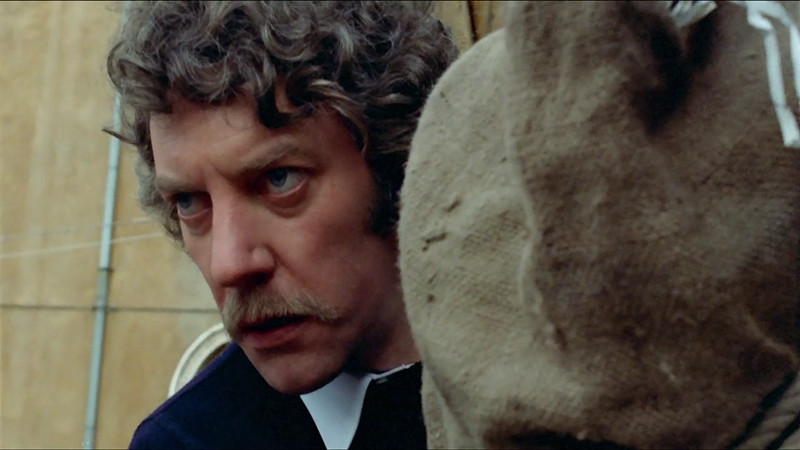
Few films bridge horror and drama like Nicolas Roeg’s Don’t Look Now, a sickly, garish, ravaged wail of a film that captures like few others the crushing force of a world’s weight coming down on two people.
The story of couple John (Donald Sutherland) and Laura (Julie Christie) using a work trip to Venice as an attempt to escape the death of their daughter, a profound visual chill suffocates the mind not only for the film’s dreary, delirious horror but for it’s subdued, nuanced dissection of struggling to find meaning in an empty world. We don’t just observe John and Laura; they permeate the air around us and seep into our eyes. The raw atmosphere of the film strangles us as it lashes out at them on the screen.
Roeg’s work here is perhaps most notable as a tour-de-force of anguished, operatically clinical visuality, with Roeg’s lurid color-work and anti-continuity editing technique on full display. The most achingly telling scene intercuts John and Laura’s sexual intercourse with the mundane aftermath of dressing back up for daily life. The scene captures their shattered, brittle world. They are perpetually aware of the temporality of human life. And by intercutting different time periods to undercut the notion of a defined, safe, understandable “present”, the film contains, and defines, its own temporality as well.
Elsewhere, the film’s Venice is a serpentine labyrinth of human obsession plastered onto a landscape that exists more in the mind than in reality. It’s less a story about humans searching for life in this labyrinth of the mind than it is a story of death coming to terms with itself. It’s an ungraspable impression of the afterlife, with characters that mentally died when their daughter did and were just waiting for their physical bodies to follow suit.
9. Carrie (Brian De Palma)
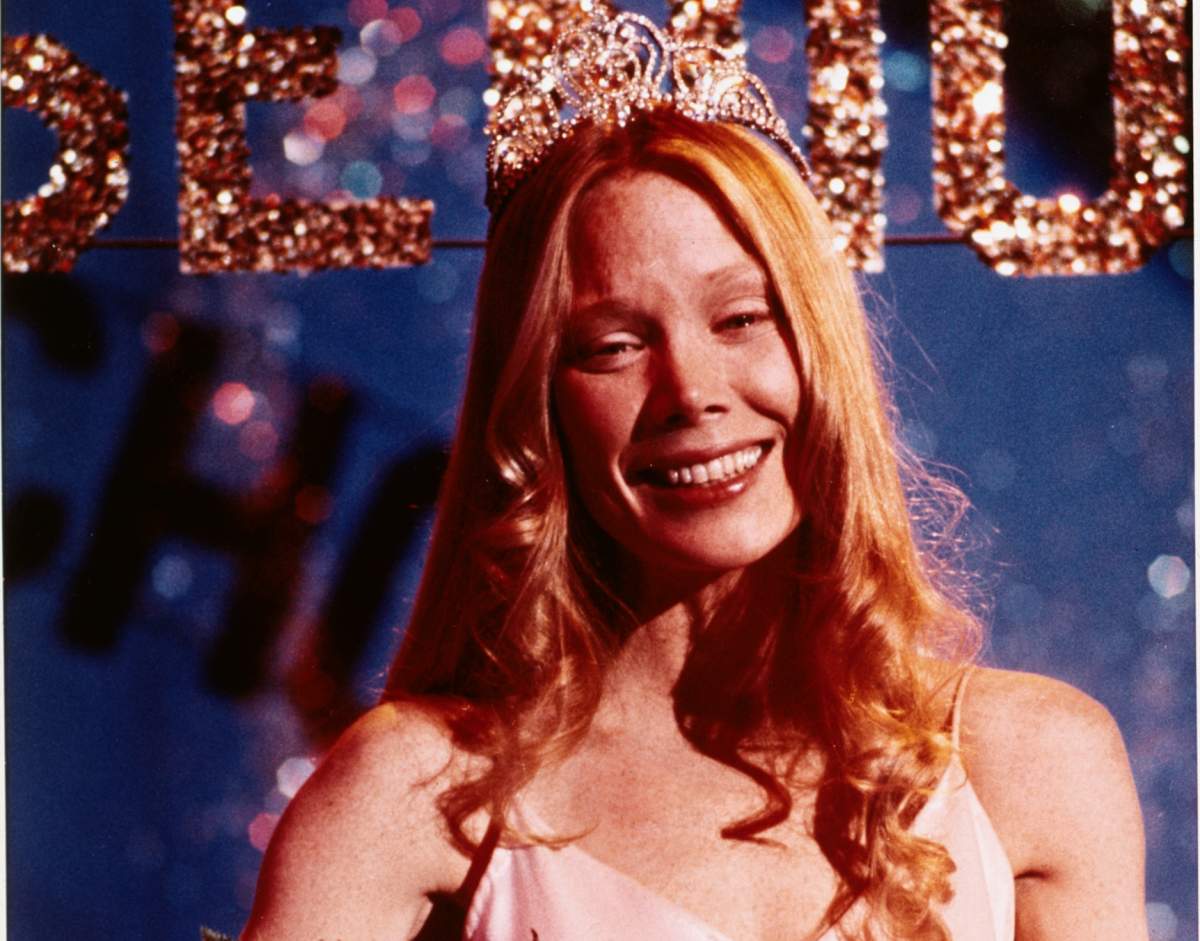
When people think of Carrie, they always think of Stephen King (whose book forms the basis of this story of teenage angst, outsider spirit, and the way our society treats female maturation as something to be swept under the rug rather than discussed) and Sissy Spacek. The script, befitting its origins by King’s pen, is undeniably hokey.
So too are the over-the-top performances and, in fact, the direction, but both work to enhance the film’s non-nuanced spirit rather than to detract from it. Spacek for instance gives deliriously perturbed walking-shrill of a performance as a frail teenager unable to come to terms with the world around her.
But, the true center of it all is director Brian De Palma, who’s penchant for stylish cool-isms, which would be the bane of any future attempt at sincerity on his part, serve him exceedingly well here as he modulates his slick entertainment to give us a film that progressively grows from unnervingly restrained to cheerily, hellishly, deliciously destructive in its visual aplomb by its conclusion.
The finale, for instance, is a smorgasbord of “who cares anymore” swaggering style. It works, almost in spite of itself. The reds during the slaughter borrow from the works of Mario Bava and Dario Argento in approximating paint rather than anything human, but that only adds to the loopy, bludgeoning, Grand Guignol inhumanness of the film.
The film even manages to earn the convictions of a shock ending – which serves no narrative or logical purpose whatsoever – through pure visual and aural construction. Shock scares are often mocked in horror, and rightfully so, but that just makes a truly great one harder to pull off.
8. The Haunting (Robert Wise)
Although director Robert Wise is largely known today for his work with grandiose, sentimental musicals like The Sound of Music and West Side Story, his early 60’s was also highlighted by cinema’s ultimate haunted house story, The Haunting. Nevertheless, the film maintains the theatrical sense of grandiose technique of these other much lighter films. It gives us expressionist angles to create a heaving mass of a drearily opulent house sucked of emotion– there’s no room left for human care amidst the wealth.
At its most subversive, the camera films from a space so close to a person in the film – but not quite one with them – that it can neither truly be a subjective or distantly objective perspective. It is not the perspective of the characters in the film so much as it is a character on its own, perpetually observing and judging.
This lends the camera a voyeuristic, confused identity. It never knows whether to stand ruthlessly still, to quaver or thrash about with a deeply human anxiety, or to move with a graceful fluidity that is completely inhuman, captured most forcefully in the famous banging door scene where the camera almost literally flexes the door to a bedroom for us and snakes across the walls with abandon.
Beyond this, a commentary on film technique is evident throughout, with a character who almost literally describes the mansion that serves as the film’s setting as a product constructed for pure fear. At one point, a camera shakes the ground as it hits it, directly breaking the logic of continuity film-making and openly reminding that this is a “film” with a “camera”.
If Wise dealt in sweeping grandiosity in his other films, here he bends the lens and re-reads horror for its own grandiosity, its own falsity, and, ultimately, its own power. In this regard, the film’s own haunted house is a metaphor for the playground fear-making of film itself.
